Saturday, January 13, 2007
DEFENSE & FOREIGN AFFAIRS - Special Analysis
Defense & Foreign Affairs
Special Analysis
Founded in 1972. Formerly Defense & Foreign Affairs Daily.
Volume XXV, No. 3 Friday, January 12, 2007
© 2007 Global Information System. Contact: GRCopley@StrategicStudies.org
Iran Continues to Prepare for Direct Confrontation With the US, Israel
Analysis. By GIS Staff. Iran’s divided clerical leadership groups continues to appear united only in attempting to address what they perceive to be the prospect of an imminent US or Israeli military attack, and the major televised address on January 10, 2007, by US Pres. George W. Bush did little to allay those concerns, highlighting as it did the US intent to bolster military deployment in Iraq and to interdict the inflow of weapons and fighters to Iraq from Syria and Iran.
Significantly, Iran has not been idle in the build-up to what it expects to be a military confrontation with the US and/or Israel. Included in this have been active operations with forces inside Iran, and attempts to convince the US that the Iranian Armed Forces possessed viable nuclear weapons.
With regard to the operations inside Iraq, on January 10-11, 2007, GIS/Defense & Foreign Affairs sources reported that a significant number of Iranian operatives had been captured by Iraqi or Coalition forces inside Iraq in Erbil, in Iraqi Kurdistan.
What was important about this particular capture was the apparent inclusion of Hassan Abbasi, onetime key Advisor to Iranian “Supreme Leader” Ali Khamene’i, and the head of the Center for Doctrinal Strategic Studies. More significantly, he is a key advisor to Pres. Mahmud Ahmadi-Nejad.
US Under-Secretary of State for Political Affairs Nicholas Burns admitted late on January 11, 2006, that six Iranian officials had been detained in Iraqi Kurdistan, but did not give details.
The capture of Abbasi is highly significant: he has been the major hard-line advocate of jihadism within the Iranian clerical Administration, and had personally taken charge of mobilizing recruitment, training, and deployment of jihadi fighters, including the recruitment of children for the task.
His movement into Iraqi Kurdistan reflects a mixture of Iranian concern over the ongoing US-led containment of Iran, and — more importantly — confidence that Iranian forces could operate safely inside that part of Iraq.
Joint military operations with Turkish forces against Kurdish targets in late 2006, reported exclusively by GIS/Defense & Foreign Affairs, have almost certainly led Iranian officials to believe that they were on the verge of a major military push through Iraq.
For details on some joint Iran-Turkey military operations, see Defense & Foreign Affairs Special Analysis, August 30, 2006: Turkey and the Partiya Karkerên Kurdistan (PKK): Preparations for the Confrontation, and May 15, 2006: Insurgency in South-Eastern Turkey; Ankara and Tehran Team to Address Kurdish Issue.
For details on Iranian nuclear weapons, see, for example: Defense & Foreign Affairs Daily, November 19, 2002 (various reports on DPRK and Iranian nuclear weapons), and Defense & Foreign Affairs Special Analysis, October 5, 2006: Upcoming DPRK Nuclear Tests Are Integral to Iranian Strategic Move, But Also Force Western Acknowledgement of Impotence to Deal With New Nuclear Threats.
NOTE: IRAN'S NUKES link - on AntiMullah site
http://noiri.blogspot.com/2006/04/irans-nukes.html
Although the US Government reacted moderately sharply to the capture of the six Iranian officials in Iraqi Kurdistan, it played down the significance altogether of the alleged capture of Abbasi, but there can be no under-stating the recklessness with which Tehran committed such a significant figure into hostile territory.
It is possible that Tehran, which remains embroiled in a fight for control of the position of the Supreme Leader while facing ongoing domestic unrest, may have been unable to control Abbasi, whose enthusiasm for spreading jihad gives him a degree of independence within the power structure.
But at the same time, Iran has, for some years — along with the Government of the DPRK (North Korea) — been working hard to convince the US that it had an arsenal of deployed nuclear and other strategic weapons (albeit, in the case of Iran, nuclear weapons acquired from Kazakhstan, Ukraine, the DPRK, and perhaps other states).
However, unlike its allied Government in Pyongyang, the Iranian clerical Government has — perhaps because it still did not have an indigenous production of nuclear weapons — demonstrated a cautiousness about antagonizing the US with an overt display of strategic weapons.
An incident which occurred on January 11, 2006, therefore may — or may not — have been an attempt by Tehran to discreetly signal the US that Iran possessed nuclear weapons.
The independent website, www.antimullah.com, on January 11, 2006, carried a report entitled Nuclear Event in Iran?, in which it reported “a huge explosion — reportedly nuclear — from the Kerman area at the edge of the Kavir Lut (major desert)”.
GIS/Defense & Foreign Affairs sources confirmed that, indeed, signs of a major explosion had been noted by nearby populations.
The website took a very circumspect approach to reporting the incident, but noted that “local Islamic Iranian news media reported that a UFO had crashed and blown up to explain the incident”, and GIS also confirmed that reporting.
It went on to say: “The explosion took place at what would be the Islamic Regime's testing ground for an atomic weapon.”
Some Iranian sources questioned whether the explosion was a “demonstration” not by the Iranian Government, but to it, perhaps by the US or Israel, but GIS sources and analysts have ruled this out almost absolutely.
Certainly, however, the US — which, as was the case with its policy toward North Korean nuclear weapons — would be reluctant to acknowledge the presence of nuclear weapons in Iran and would be expected to ignore, or dismiss, any evidence of such an explosion.
ALAN's NOTE: in the AntiMullah article about the capture of Hassan Abbasi, it was noted that this man's "Freedom Organizations" umbrella group networks and supports all "anti-imperialism" terror groups. The almost defunct November 17 group, would certainly fall into this category. So it would not be a far reach to link the embassy attack to his capture. (Reference to following article on US Embssy attack).
Rocket Attack Against US Embassy in Athens Signals Resurgence of Greek Leftist Terrorism
Analysis.
By Valentine Spyroglou, South-East Europe Bureau Chief.
A blast from a rocket hit the US Embassy in Athens, Greece, on Friday, January 12, 2007, at 05:58 hrs local time.
The rocket hit the US Embassy building on the third floor, putting an end to a 10-year “peaceful” period between the domestic terrorist organizations and the important international targets in Greece.
There were no injuries from the blast, although some minimal damage was caused to the front of the building; one glass plate in the buildings forefront was damaged, above the US eagle emblem.
The rocket hit a marble wall and the blast was mitigated. The rocket landed in a toilet on the third floor of the building, which also houses Ambassador Charles Ries's office.
Initial information reveals that the rocket was fired from a building opposed the US Embassy in Athens, from the Lampsaku Str., where a construction site is located. The distance between the US Embassy and the launch point is approximately 100 meters (328 feet).
At about 07:30 hrs Greece local time, an unknown person called the offices of the private company “Security”, which secures the embassy (on behalf of the US Government) and assumed responsibility on behalf of the local terrorist organization Revolutionary Struggle. A second call was reportedly made to a newspaper in Athens.
At 08:00 hrs, Amb. Ries stated that this was a “very serious attack”, adding that the attack came from outside and “there can be no justification for such a senseless act of violence”.
Amb. Ries also quoted his discussion with the Greek Minister of Foreign Affairs, Mrs Dora Bakoyianni, who confirmed the total cooperation of the Greek Government for the pursuit of the perpetrators.
Mrs Bakoyianni visited the US Embassy where she met with Amb. Ries; she stated that the Greek Government was determined to use every means to prevent similar incidents in the future.
Furthermore, Greek Minister of Public Order Vyron Polydoras said that “we believe it is a symbolic act, operationally. We are worried by the incident, but not terrified. Our Government strongly condemns the attack. The Greek authorities cooperate with the US authorities to detect the case.”
US State Department spokesman confirmed the incident and announced that the US Embassy in Athens would be closed for the day.
The US Ambassador in Athens and the Greek Ministers posed their statements in the front of the Embassy’s building, to indicate that they had no fear of the terrorists.
Greek police and US counter-terrorism officials in Greece — who routinely cooperate — began working together on the attack.
For three hours on January 12, 2007, the boulevard on which the US Embassy is located (in downtown Athens), and the surrounding streets, were closed.
The Greek Ministry of Public Order was still investigating late on January 12, 2007, the authenticity of the telephone call to the private company “Security”, on behalf of “Revolutionary Struggle”, as this group usually issues written announcements to verify their authenticity, when they conduct terrorist or violence acts.
Key Notes
The US Embassy in Athens is the second most strongly-secured and heavily-guarded US Embassy in the world, after the US Embassy in Saudi Arabia, and it is the most secured building and area in Greece by the Hellenic police.
Hence, the terrorist attack against the US Embassy in Athens, the location, and the way it was hit, indicated that it was performed by very well-trained terrorists capable of performing terrorist acts downtown and in one of the busiest streets in the Greek capital. So far, there were no known eyewitness who saw the terrorists or the launch of the rocket.
On the private Greek TV stations MEGA Channel and Ant1 TV, which covered the events from the beginning, more than 10 people living behind the US Embassy building and near where the Ambassador’s house is located, stated that they heard “dense shots” in the back of the Embassy’s building two hours before the rocket blast.
For these public statements the Greek forces and the US Embassy made no formal comments, while from 10:00 hrs local time (on January 12, 2007) none of the Greek media again mentioned such statements.
Also, at 10:00 hrs local time, a threatening telephone call was made, forewarning of a bomb in the Athens Olympic Stadium; the warning proved to be misleading.
Initial information which came from the location of the terrorist attack mentioned that a rocket launcher was found on a construction site opposite of the US Embassy, and referred to an auto-launched rocket, 28.6 inches in length, similar to those used by the terrorist organization November 17.
This information was known to all media that used the term ‘static attack’, using the method of November 17.
GIS secure information revealed that the attack was conducted with an 84 inch rocket, of 45 cm length, and of eastern origin; more specifically of Russian construction.
The rocket was launched from a motorbike, targeting the US eagle emblem. The terrorists aimed to conduct an impressive and symbolic attack, but they missed as they hit some centimeters above the main target, and they hit the toilets located on the third floor of the building.
Initial information reveals that the Russian Antitank Grenade Launcher, RPG-7, was used.
The terrorist organization November 17, on Sunday December 24, 1989, had stolen weapons from four ammunition depots in the village of Sykurio near the city of Larisa, Greece, including 73 2.36 inch rockets, 40 3.5 inch rockets, 7,000 rounds of 7.62mm ammunition, and considerable quantities of .45 caliber and .38 caliber ammunition, grenades, and electrical detonating fuse for explosives.
When members of November 17 where arrested before the 2004 Athens Olympic Games, 87 rockets and other material stolen from Sykurio were found in two safe houses of the organization. From 1990 to 1999, November 17 had launched in terrorist acts using 36 rockets. It is obvious, then, that November 17 had more ammunition apart from the quantities stolen from Sykurio.
In the two safe houses of November 17, one in Patmos street and one in Damareos street, among others things, three .45 pistols were found; they had been stolen in December 1977 from a military camp in the village Eleftheroupoli near the city of Kavala, Greece, among 32 stolen .45 pistols. Five more pistols from the same bundle were found in 1986 in the Kalama street, Athens, in the safe-house of the known terrorist, Christos Tsutsuvis.
Other information which has not been published demonstrates that terrorist organizations in Greece cooperate closely with each other and with other European groups. The profile of the November 17 ideology was made evident from the 55 proclamations which the organization issued in its history.
The organizations profile is similar to European terrorist organizations profile, as is the Red Army Faction (German: Baader-Meinhof Gang), Direct Action (France: Action Directe), and the Red Brigades (Italy: Brigade Rosse).
November 17 maintained closed relations with international terrorist organizations and famous terrorists such as Johannes Weinrich and Carlos “The Jackal” (Ilich Ramírez Sánchez).
While members of November 17 have been arrested, and even though a significant quantity of guns, ammunitions and other clues were found, the typewriter of the organization for writing the proclamations, and the .45 gun they used for most of the assassinations they had conducted, were not found.
Greek and foreign politicians and diplomats have indicated that a number of November 17 members were not arrested but escaped from the authorities; despite the Europol report issued in May 2005 which discussed the final dislocation of the terrorist organizations the Revolutionary Organization 17 November (November 17) and the Revolutionary People’s Struggle (ELA).
Among the “after November 17 era” organizations which appeared in Greece after the summer of 2003, two are considered to pose serious threat to Greek security.
These are the Revolutionary People’s Action and the Revolutionary Struggle.
The Greek counter-terrorism unit is concerned with the theft of 300 kilos of dynamite and detonating fuse from a quarry in the prefecture of Fthiotida (central Greece).
During 2003, these two terrorist organizations attacked, with bombs, a Hellenic Police Station in the Kallithea area in Athens, the Courts in Athens and two buses carrying police officers in Athens.
The explosives detected in all cases came from the quarry in Fthiotida. Therefore, most probably the two organizations are actually one or members of both organizations have close relations.
In May 2004, 100 days before the beginning of the 2004 Athens Olympic Games, the terrorist organization Revolutionary Struggle attacked, with three improvised bombs, the Hellenic Police Station in Kallithea, Athens, although with no victims or injuries. [See GIS Section on Olympic Games Security.]
After the 2004 Athens Olympic Games, in October 2004, the same organization attacked, using a remote controlled mechanism, two buses carrying police officers heading towards the jail where the November 17 terrorists were kept.
In December 2004, they killed the Greek police guard in the house of the British Defence Attaché.
The terrorist organization Revolutionary Struggle appeared in September 2003 when they had attacked the Court in Athens.
The other terrorist organization, Revolutionary People’s Action, appeared a few days after the attacks conducted by the Revolutionary Struggle, although they conducted low profile attacks using minimal power.
In June 2006, Revolutionary Struggle attacked for the seventh time (in total) the Greek Minister of Public Order, Mr Giorgos Voulgarakis, with a remotely-controlled bomb, but they missed their target. Other attacks include blasts again the Hellenic Ministries of Economy and Finance and of Employment and Social Security.
On June 6, 2006, Revolutionary Struggle issued a proclamation of 11 pages, explaining the reasons for which they had attacked the Ministry of Public Order by using 2.5 kilos of explosives activated through remote control. In that proclamation they had also targeted the Minister of Foreign Affairs, Mrs Dora Bakoyiannis, and Minister of Defense Evaggelo Meimaraki.
Both Ministers were accused on concessions they made on national issues, such as is the Cypriot issue, the dispute with FYROM (Former Yugoslav Republic of Macedonia), and Turkey’s accession in the European Union (EU).
This terrorist organization usually announces its next target, through the confirmation of an attack by the use of a proclamation.
The attack against the Ministry of Economy and Finance on December 12, 2005, was announced in the proclamation by which they had assumed responsibility for the attack of the Ministry of Employment and Social Security in July 2005. After the attack against the Ministry of Economy and Finance, Revolutionary Struggle had issued a proclamation in which they assumed responsibility for the attack, stating the next target that would be the Minister of Public Order, Mr Voulgarakis.
In the 11-page proclamation of June 2006, the organization referred among others to the “problem with the name of FYROM”. It is noted that today, December 12, 2006, and at 15:30 hrs, was scheduled a formal visit of the UN special envoy for FYROM and Greece and US diplomat Matthew Nimetz for talks with the Greek Minister of Foreign Affairs, Mrs Bakoyiannis, in Athens. Mr Nimetz came from Skopje, the FYROM capital, where he had important talks over the name of the country and the disputes with Greece.
Even though, no organization had, by late January 12, 2007, formally assumed responsibility for the terrorist attack against the US Embassy in Athens, GIS associates analyzed terrorist information in Greece and concluded that the terrorist attack was indeed conducted by members of the Revolutionary Struggle.
GIS associates and experts on terrorism in Greece, support the view that the Revolutionary Struggle is the follower of the older terrorist organization Revolutionary Cell which once operated close to the external cell of November 17. They do not exclude the fact that members of the Revolutionary Cell founded the Revolutionary Struggle, along with November 17 members that have not yet been arrested.
Further, other members of the Revolutionary Cell probably founded the Revolutionary People’s Action, which cooperates with the Revolutionary Struggle.
Moreover, the terrorist act of the Revolutionary Struggle against a target like the US Embassy in Athens, signals its establishment as the followers of November 17.
This theory is supported by the fact that today — January 12, 2007 — in the Court in Athens, the operational member and chief of November 17 — Demitris Koufodinas, codenamed “Lukas” — was to testify. Lukas was supposed to testify on Monday, January 8, 2007, but he requested a hearing for today, January 12, 2007.
On the other hand, the use of the RPG-7 from a close distance, against a heavily guarded target, indicated good training, decisiveness, experience, and a willingness to “internationalize” their acts, with the aim of winning international exposure of their organization.
Undoubtedly, after the US Embassy strike in Athens, the Revolutionary Struggle will be regarded as the number one domestic terrorist organization in Greece, attracting the followers of November 17 and of the Revolutionary People’s Struggle (ELA).
November 17 had, on February 15, 1996, conducted a rocket attack against the US Ambassador’s house in Athens. At that time the rocket had hit the protection wall.
Furthermore, the use of a Russian-constructed rocket RPG indicated that the terrorist organization had access in obtaining dangerous weapons. It is most probably that these were obtained from the Balkans.
After the end of the war between Bosnia and Herzegovina (BiH) and Kosovo, weapons and explosives smuggling had found its exits. Any kind of weapons and ammunitions, explosives, drugs, etc. are transferred through the networks of old terrorists, members of the Kosovo Liberation Army (KLA/UCK), to the Balkans and Europe.
It is easy for someone to find in FYROM, Albania, or Kosovo any weapon or explosives and in very reasonable price, place and order, and have them delivered in Athens through the networks of the Albanian mafia which traffic in narcotics.
It must be stressed that the Greek Army does not possess RPGs, so the weapons used were not stolen from the Greek Forces.
In the Balkans, Russian RPGs ended in terrorist hands after the Serbian Army left from Kosovo. All Balkan security services are aware of such information.
The GIS office in south-east Europe analyzed all information and it considers that with the January 12, 2007, strike, terrorism in Greece was likely to make a resurgence. It is very probable that older, inactive cells were activated or other members of the terrorist organizations November 17 and Revolutionary People’s Struggle (ELA) in cooperation with third-generation terrorists were activated.
The latest secure information revealed that the Greek Police Counter-Terrorism Unit is optimistic of making progress in identifying the attackers, and making arrests, because they had information of a possible terrorist attack the few weeks leading up to the January 12, 2007, attack, despite the statements made by the US Ambassador Ries that Greece did not expect a terrorist attack.
Subscribe to:
Post Comments (Atom)

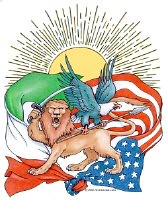
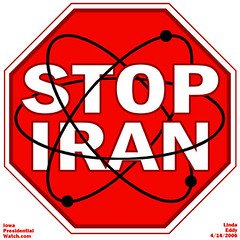

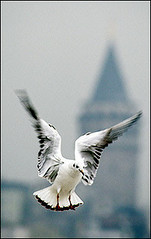



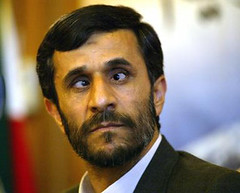

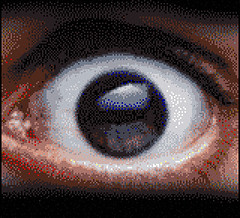

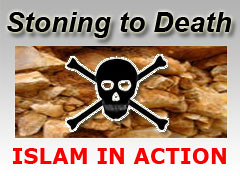

No comments:
Post a Comment